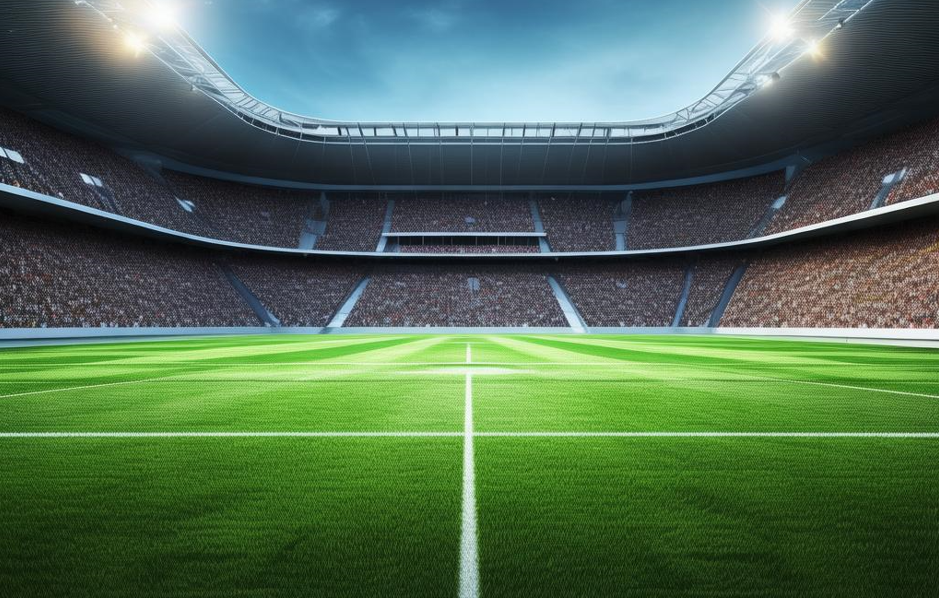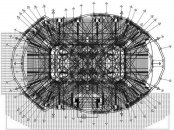Led Sports Field Lighting System: Layout,Control System,Control Panel

Directory:
1. Sports Field Introduction
2. Power Supply for Sports Lighting
3. Sports Lighting Sources and Fixture Layout
4. Sports Lighting Control System
4.1 Structure of the Sports Lighting Control Module
4.2 Implementation of Sports Lighting Control
4.3 Requirements for Sports Lighting Control System
Sports lighting is a crucial component of the electrical systems in sports facilities. It encompasses the power supply, lighting fixtures, lighting layout, and intelligent control systems, all of which together form a comprehensive sports lighting system. This system not only provides essential lighting during regular use but also ensures proper functionality during sporting events, enhancing the usability and comfort of the facilities.
1. Sports Field Introduction
This project involves a large Class A gymnasium with a construction area of approximately 110.000 square meters, featuring 18496 seats for basketball games.
2. Power Supply for Sports Lighting
The lighting for the competition area of the stadium is classified as a primary load, typically powered by dual municipal electricity sources. Emergency lighting for both the competition area and spectator seating is supplied by dual municipal power along with a centralized power source. For significant national and international events, 50% of the sports lighting power can be sourced from rented diesel generators. The lighting system utilizes a radial power supply to minimize potential failure points and enhance reliability.
3. Sports Lighting Sources and Fixture Layout
The stadium's lighting system employs 800W LED fixtures, while safety and spectator seating lighting utilize 350W LED fixtures. The LED lights have a color temperature of Tcp5700K, a CRI of 90. and R9 greater than 20. The overall energy efficiency of the fixtures is at least 80lm/W, with a color tolerance of ≤5SDCM. The LED lights must have a power factor exceeding 0.9. THDi ≤ 10%, flicker below 1%, and all fixtures must have an IP65 protection rating. The design for the installation position, quantity, and aiming angle of the stadium lights must comply with competition standards and meet the requirements for television broadcasts regarding vertical illumination, uniformity, gradient, glare, color rendering, and color temperature. The sports lighting in the competition area is arranged in a circular horse track layout, with two main tracks positioned above the stadium. The LED fixtures for venue and spectator lighting are placed along these tracks, fulfilling the lighting requirements for UHDTV broadcasts of major international events, as well as national competitions. The projection angle of each lamp is limited to 65°, with each fixture providing illumination from at least three directions at its target point, and safety measures are implemented to prevent falls. Figure 1 illustrates the lamp layout on the horse track.
Fig1:Lighting layout at the horse track level

4. Sports Lighting Control System
4.1 Structure of the Sports Lighting Control Module
The intelligent lighting control system for sports facilities features a modular design and consists of seven main components:
(1) Controller: Manages the switching and dimming of lights.
(2) Panel: Comprises a panel switch and a touch screen for manual lighting control by operators.
(3) Sensor: Includes photoelectric sensors, motion detectors, and infrared remote controls to monitor changes in environmental conditions for lighting control, though these are seldom used in sports lighting.
(4) Interface: Facilitates integration with other control systems, utilizing common interfaces such as reed contacts, DMX-512. RS232. TCP/IP, and LON.
(5) Software: Encompasses server software and system platform software, typically Chinese monitoring software, for overseeing lighting programs.
(6) Data Bus: Specifically RS485. serves as the communication pathway for commands and data among various control components within the system.
(7) Current Detector: Monitors the controlled equipment.
4.2 Implementation of Sports Lighting Control
Intelligent lighting control systems should be implemented in Special and Class A sports facilities, while Class B facilities should also utilize these systems. The network topology for the lighting control system should be either distributed or decentralized. The rated current of the switch-type driver module must meet or exceed the calculated current for its circuit, and the rated voltage should align with that of the circuit it serves. The overload characteristics of the driver module should correspond with the lamp's starting characteristics, with particular attention to the inrush current when starting LED lamps. If the driver module is installed in areas with poor heat dissipation or high temperatures, such as control cabinets, its derating factor should not exceed 0.8. For sports involving artistic performances, like dance and ice skating, a separate dimming system should be established when dimming is necessary. While current LED lamps offer effective dimming and color adjustment, the two systems have different priorities. The intelligent lighting control system should utilize an open communication protocol to interact with the building equipment management system and the competition equipment management system. Venue lighting should be managed by a dedicated lighting control system, separate from non-venue lighting systems, ensuring that other control systems do not interfere with the normal operation of venue lighting.
4.3 Requirements for Sports Lighting Control System
The requirements for the sports lighting control system are outlined as follows:
(1) The system must allow for pre-set lighting modes that remain intact even during power outages.
(2) It should feature soft start and soft stop capabilities, with adjustable timing for both. These functions help minimize the inrush current during startup, promoting stable system operation.
(3) In addition to automatic controls, the system must include a manual control option. When using a smart control panel for manual operation, it should incorporate a "lock" feature or similar safeguards to prevent accidental misuse. The "lock" function is crucial for avoiding errors.
(4) The system should include monitoring features such as loop current monitoring, overload alerts, and leakage alarms. It is advisable to track lamp status, total usage time, and expected lifespan. The leakage alarm is particularly important for alerting staff to faults that could lead to hazards like electric shocks or fires, although this feature is often neglected due to the high installation of venue lighting fixtures.
(5) The system should support a group delay on/off lighting function.
(6) In the event of a fault, the system must be capable of automatically locking the operational state prior to the fault.
(7) The intelligent lighting control system should have a display screen that visually represents the current lighting status and offers a user-friendly interface in Chinese.
Modern LED lights come with dimming capabilities that can be controlled via a console, system host, or tablet, allowing for scene changes and audience interaction. However, the lighting control modes for multi-purpose sports venues should extend beyond those mentioned, with specific control modes tailored to different sports.